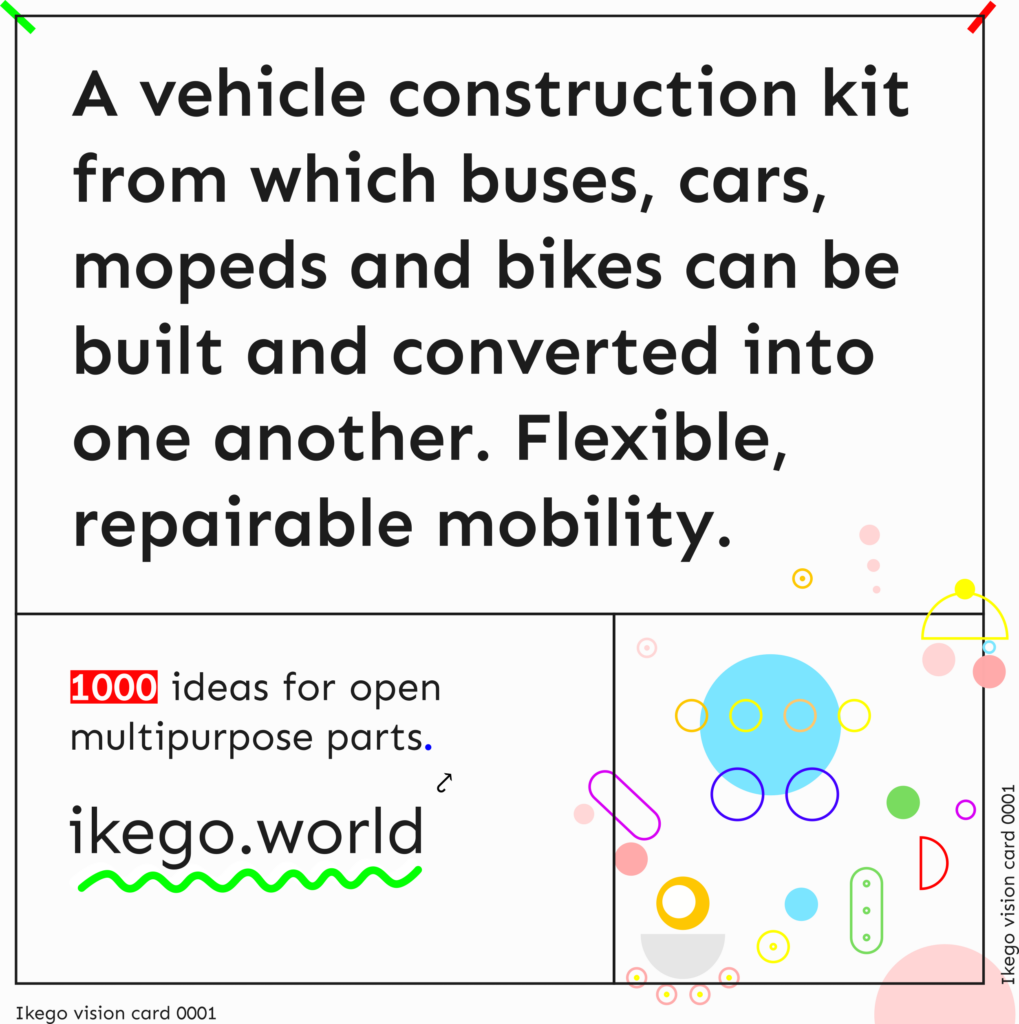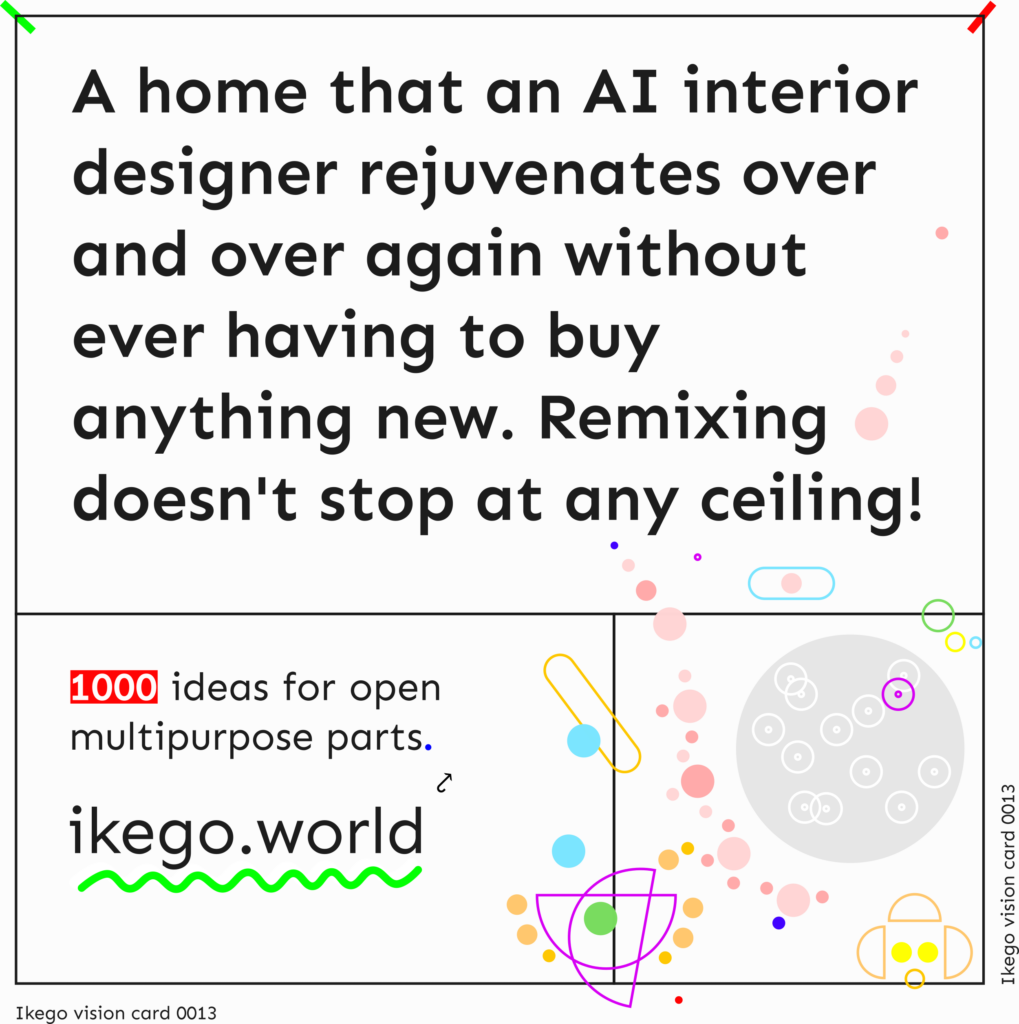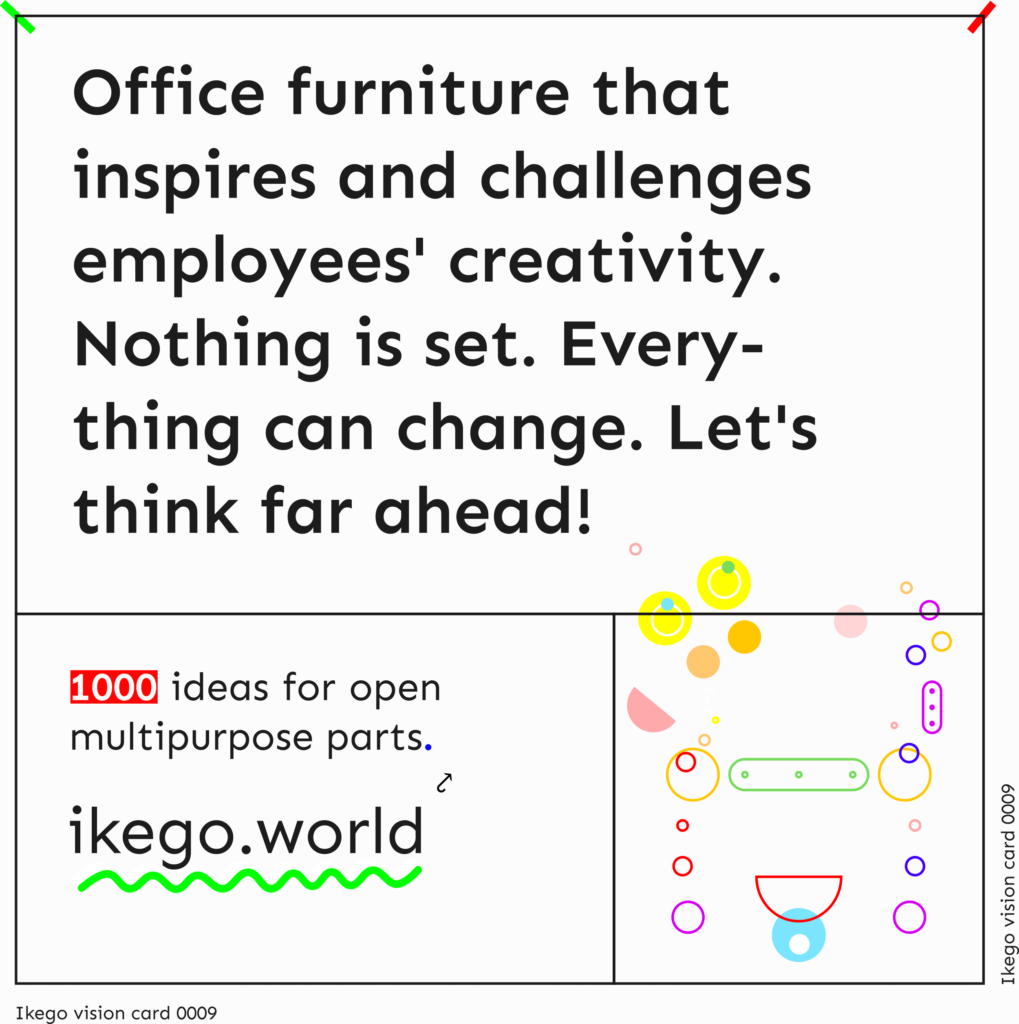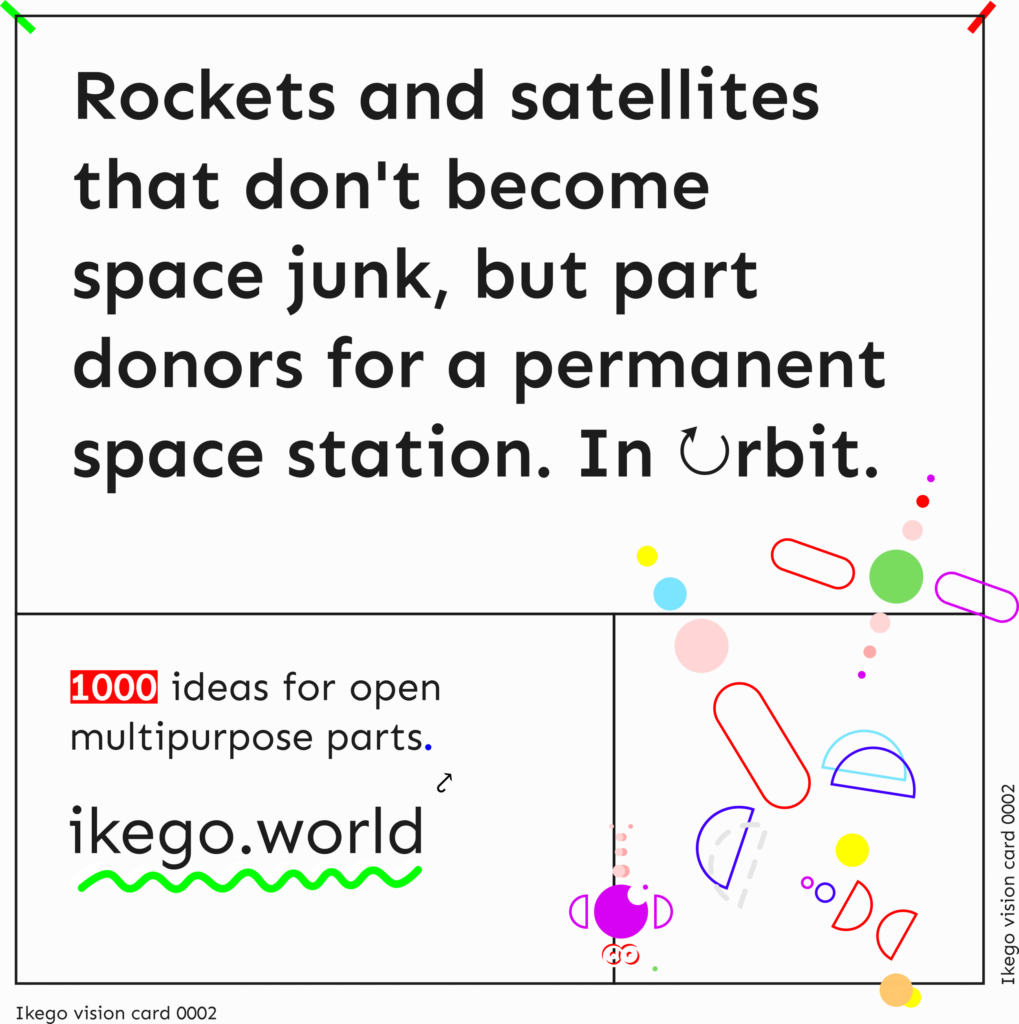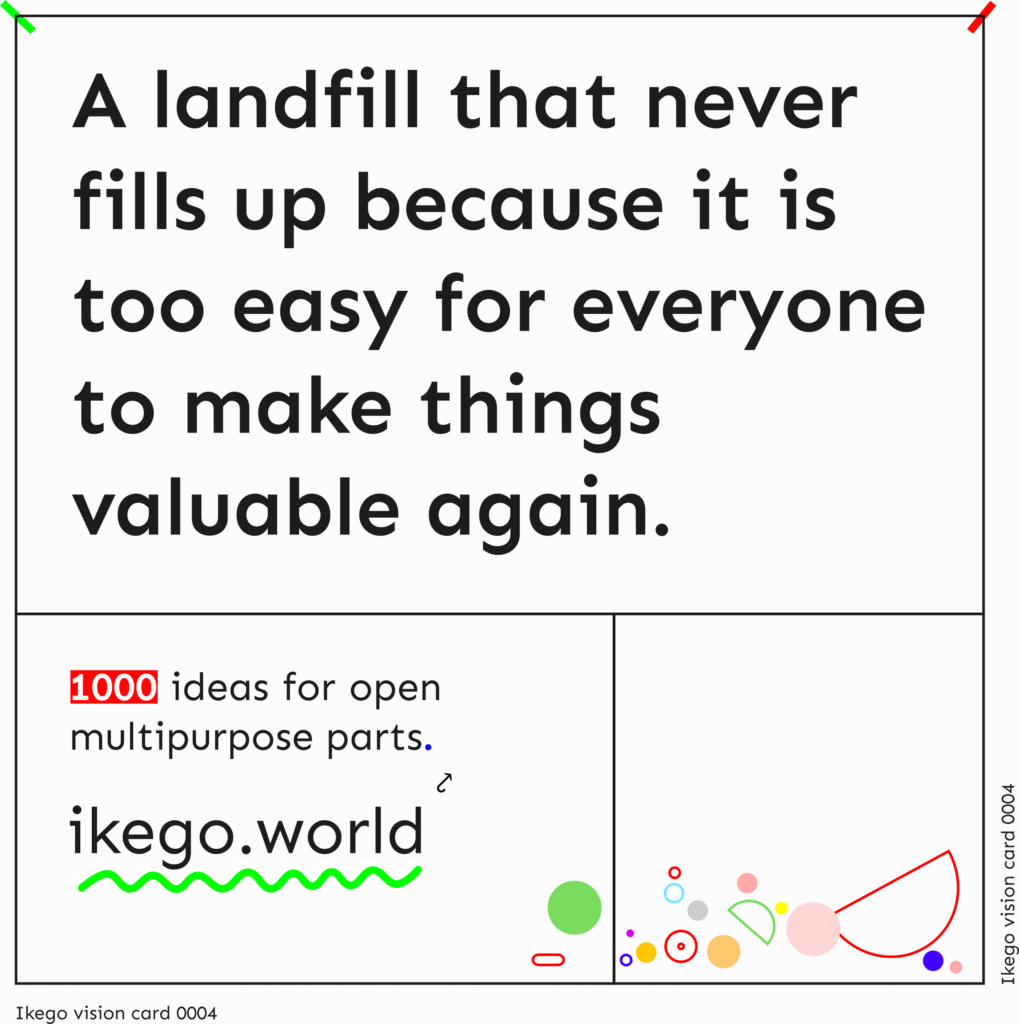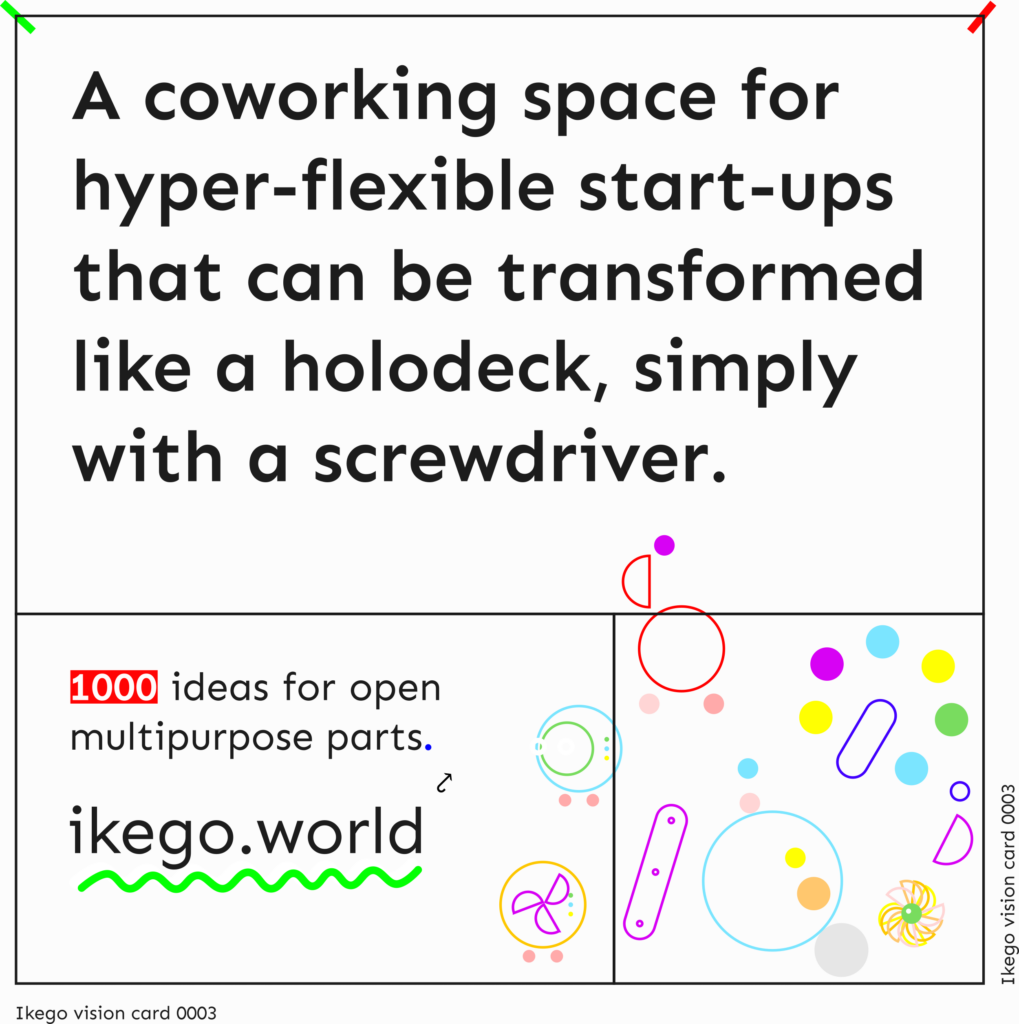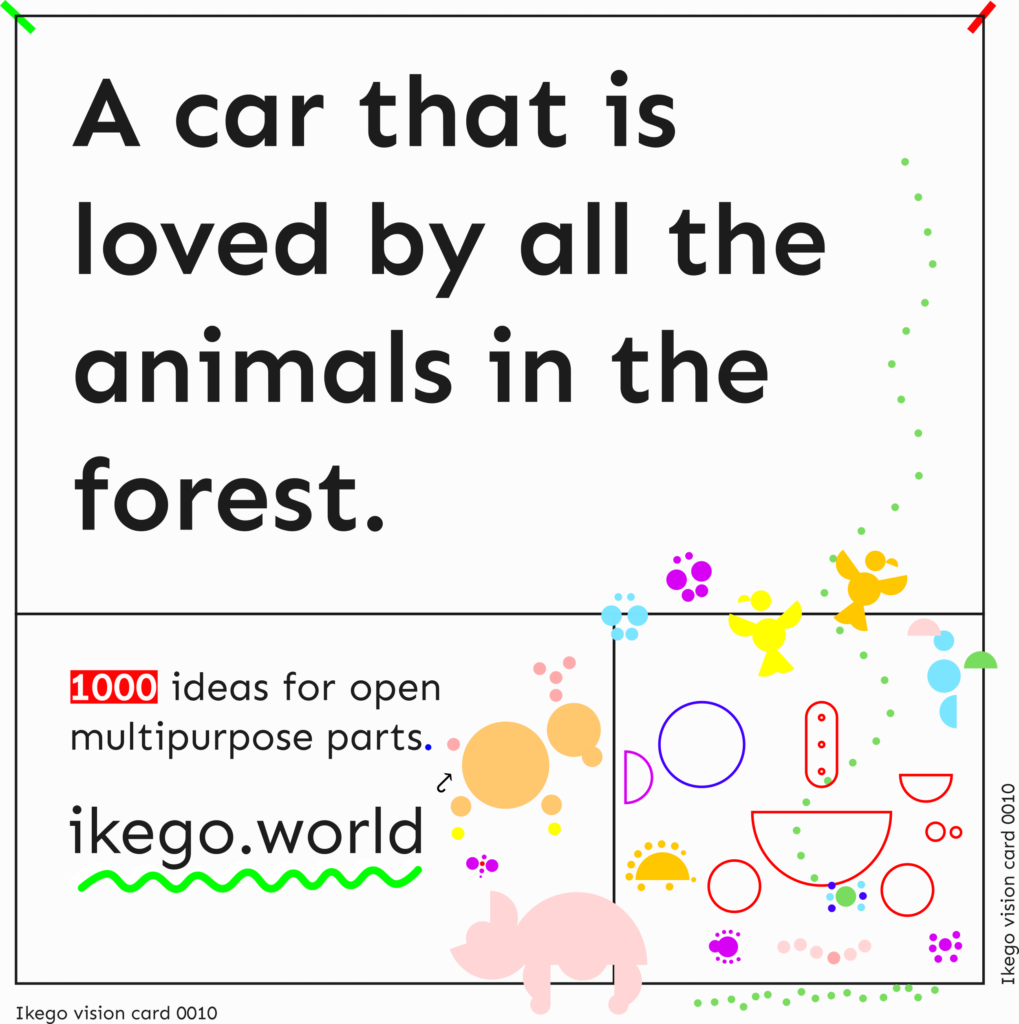4b0ut th3 m1ss10n ↝
We asked ourselves how we could create products that do not destroy the planet.

: – l
Current consumption changes the planet
The circular economy knows a collection of practices that help to keep already extracted materials in the loop.
re
re
re
re
re
re
re
re
re
r
The ‘circular economy‘ gives us a collection of sustainable practices that keep already extracted materials in the loop.
But there is one problem: These practices only work when they are supported by the design of our products. Sadly, most current products fail to do this.
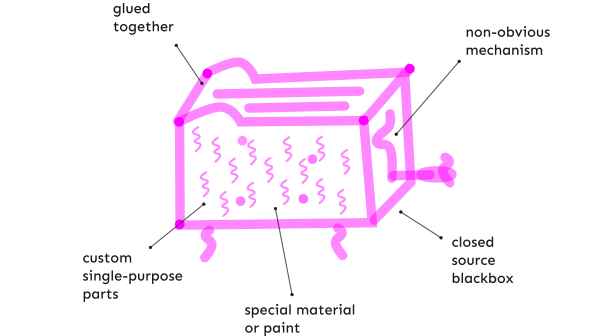
Current common design practices ↑, they make circularity difficult.
So we searched long and hard for a design approach that enables all of these practices. And when we found it, it came with an unexpected superpower:
.
🔎⚖✏♾💥
So we searched long and hard for a design approach that enables all of these practices. And when we found it, it came with an unexpected superpower:
open multipurpose parts
Yes, it turns out, when you assemble products from open multipurpose parts, all circular practices suddenly become possible!

Multipurpose parts means parts have many use cases not just one, almost like LEGO bricks.
The problem now: We have to find and invent these parts and redesign everything with them. (A LOT of research is needed.)
But we started the journey…
🚀
… and we know that such a goal can only be achieved if we work together with others. You make the difference.
Together
So we invite you to work with us on this vision, either in close collaboration or just independently.
🌿
↓
🌼 💮 🏵️ 🌸
Vision
*
By giving our products the superpowers of Open Multipurpose Parts, we could solve the sustainability crisis while even improving the quality of our products and our lives.
⁕
Technology empowers us. And Open Multipurpose Parts are definitely another step toward turning us into superhumans.
⚘
Imagine your entire home is equipped with Open Multipurpose Parts products. You live in a super dynamic building kit. Ask your AI assistant for remix ideas, and adjust things anytime. Next level freedom.
⁕
I think early adopters of products made from open, multipurpose parts will be people or institutions that can see an immediate and direct benefit from the convertibility of the products, such as young families, offices, exhibition spaces and nomadic individuals. More users will follow from there. For them remixability is a distant future option on the horizon rather than something that needs constant updating.
*
If you pay close attention to the world around you today, you will discover parts in some places that have more than one possible use. There are also “upcycling projects” for many things. Design with Open Multipurpose Parts aims to do more than just increase the number and distribution of these parts and solutions. It is about visibility. Remix ideas are collected and immediately accessible. Upcycling projects depend on someone finding the right idea at the right time and in the right place. Open Multipurpose Parts aims to make thousands of ideas available at any time and in any place.
*
Products are always the result of professional collaboration. Designers, manufacturers, and marketers work together to bring products into our homes. The circular economy extends the chain of actors who deal professionally with products: repair, remanufacturing, repurposing, and recycling are tasks for professionals. The actors at the beginning of the chain (designers, manufacturers, marketers) must take the requirements of the actors further down the chain into consideration and enable their work. The decision to use Open Multipurpose Parts at the beginning of the chain is a way to do this. The handover of the products through the chain works, the circular economy succeeds.
*
Design is hard. Creating products that people want to buy is not easy. Open Multipurpose Parts make this task even harder. It’s not for wimps. But it’s worth it!
*
Structural systemic solutions: Behind modern products lie enormous, complex, global systems. These are necessary for our products to come into being. The problem is that these systems are largely unsustainable. They are destroying the current shape of the planet. Transformative design must be capable of changing these systems and allowing new systems to emerge. Ideally very product is a nucleus for a different world. A virus. Products made from open multipurpose parts — let’s build them to be just that.


COLLABORATIVE
WORLDCHANGING
🔩
Image Credits: garbage image by “Dying Regime”, CC-BY 2.0 Generic | all other images by Studio Mifactori, CC-BY 4.0
